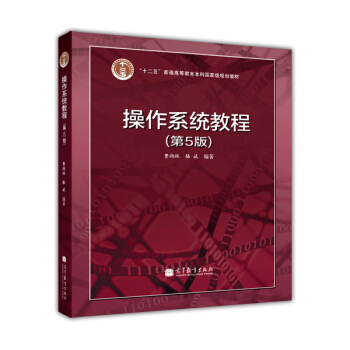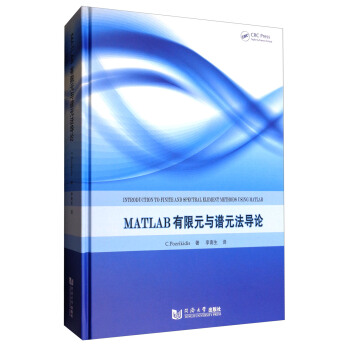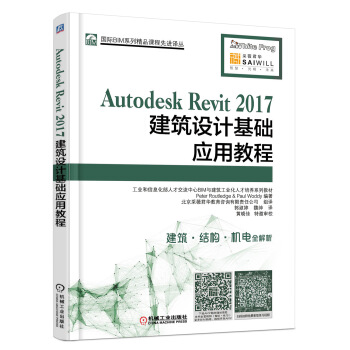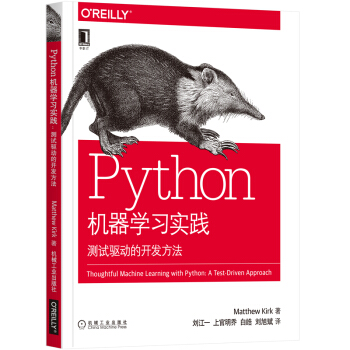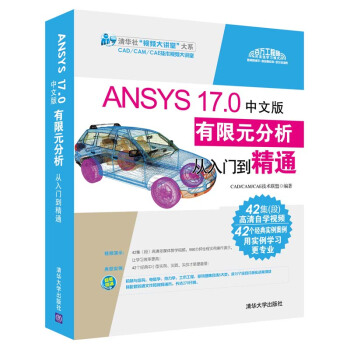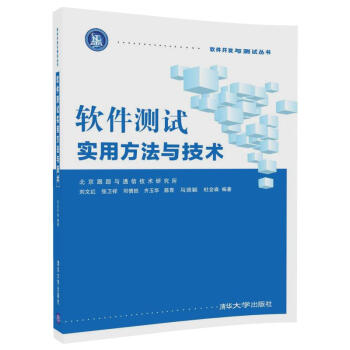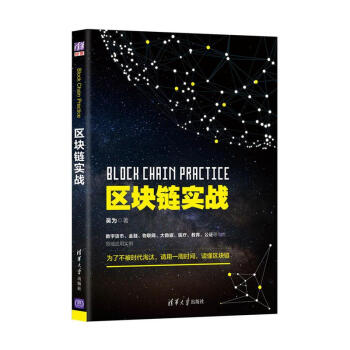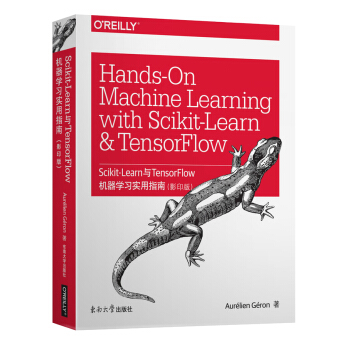

具体描述
内容简介
通过具体的例子、很少的理论以及两款成熟的Python框架:Scikit-Learn和TensorFlow,作者Aurélien Géron会帮助你掌握构建智能系统所需要的概念和工具。你将会学习到各种技术,从简单的线性回归及发展到深度神经网络。每章的练习有助于你运用所学到的知识,你只需要有一些编程经验就行了。
探索机器学习,尤其是神经网络
使用Scikit-Learn全程跟踪一个机器学习项目的例子
探索各种训练模型,包括:支持向量机、决策树、随机森林以及集成方法
使用TensorFlow库构建和训练神经网络
深入神经网络架构,包括卷积神经网络、循环神经网络和深度强化学习
学习可用于训练和缩放深度神经网络的技术
运用实际的代码示例,无需了解过多的机器学习理论或算法细节
作者简介
Aurélien Géron,是一名机器学习顾问。作为一名前Google职员,在2013至2016年间,他领导了YouTube视频分类团队。在2002至2012年间,他身为法国主要的无线ISP Wifirst的创始人和CTO,在2001年他还是Polyconseil的创始人和CTO,这家公司现在管理着电动汽车共享服务Autolib'。精彩书评
“本书很好地介绍了利用神经网络解决问题的相关理论与实践。它涵盖了构建高效应用涉及的关键点以及理解新技术所需的背景知识。我向有兴趣学习实用机器学习的读者推荐这本书。”—— Pete Warden
TensorFlow移动部门主管
目录
PrefacePart Ⅰ.The Fundamentals of Machine Learning
1. The Machine Learning Landscape
What Is Machine Learning?
Why Use Machine Learning?
Types of Machine Learning Systems
Supervised/Unsupervised Learning
Batch and Online Learning
Instance-Based Versus Model-Based Learning
Main Challenges of Machine Learning
Insufficient Quantity of Training Data
Nonrepresentative Training Data
Poor-Quality Data
Irrelevant Features
Overfitting the Training Data
Underfitting the Training Data tepping Back
Testing and Validating
Exercises
2. End-to-End Machine Learning Project
Working with Real Data
Look at the Big Picture
Frame the Problem
Select a Performance Measure
Check the Assumptions
Get the Data
Create the Workspace
Download the Data
Take a Quick Look at the Data Structure
Create a Test Set
Discover and Visualize the Data to Gain Insights
Visualizing Geographical Data
Looking for Correlations
Experimenting with Attribute Combinations
Prepare the Data for Machine Learning Algorithms
Data Cleaning
Handling Text and Categorical Attributes
Custom Transformers
Feature Scaling
Transformation Pipelines
Select and Train a Model
Training and Evaluating on the Training Set
Better Evaluation Using Cross-Validation
Fine-Tune Your Model
Grid Search
Randomized Search
Ensemble Methods
Analyze the Best Models and Their Errors
Evaluate Your System on the Test Set
Launch, Monitor, and Maintain Your System
Try It Out!
Exercises
3. Classification
MNIST
Training a Binary Classifier
Performance Measures
Measuring Accuracy Using Cross-Validation
Confusion Matrix
Precision and Recall
Precision/Recall Tradeoff
The ROC Curve
Multiclass Classification
Error Analysis
Multilabel Classification
Multioutput Classification
……
Part Ⅱ.Neural Networks and Deep Learning
A. Exercise Solutions
B. Machine Learning Project Checklist
C. SVM Dual Problem
D. Autodiff
E. Other Popular ANN Architectures
Index
精彩书摘
《Scikit-Learn与TensorFlow机器学习实用指南(影印版)》:3.It is quite possible to speed up training of a bagging ensemble by distributing it across multiple servers, since each predictor in the ensemble is independent of the others.The same goes for pasting ensembles and Random Forests, for the same reason.However, each predictor in a boosting ensemble is built based on the previous predictor, so training is necessarily sequential, and you will not gain anything by distributing training across multiple servers.Regarding stacking ensembles, all the predictors in a given layer are independent of each other, so they can be trained in parallel on multiple servers.However, the predictors in one layer can only be trained after the predictors in the previous layer have all been trained.
4.With out-of-bag evaluation, each predictor in a bagging ensemble is evaluated using instances that it was not trained on (they were held out).This makes it pos-sible to have a fairly unbiased evaluation of the ensemble without the need for an additional validation set.Thus, you have more instances available for training, and your ensemble can perform slightly better.
5.When you are growing a tree in a Random Forest, only a random subset of the features is considered for splitting at each node.This is true as well for Extra-Trees, but they go one step further: rather than searching for the best possible thresholds, like regular Decision Trees do, they use random thresholds for each feature.This extra randomness acts like a form of regularization: if a Random Forest overfits the training data, Extra-Trees might perform better.Moreover, since Extra-Trees don't search for the best possible thresholds, they are much faster to train than Random Forests.However, they are neither faster nor slower than Random Forests when making predictions.
6.Ifyour AdaBoost ensemble underfits the training data, you can try increasing the number of estimators or reducing the regularization hyperparameters of the base estimator.You may also try slightly increasing the learning rate.
……
用户评价
这本书简直是机器学习新手梦寐以求的宝藏!我一直对机器学习很感兴趣,但总觉得入门门槛很高,各种算法和库的概念让人头晕。直到我翻开这本书,那种感觉瞬间消失了。作者以一种非常清晰、循序渐进的方式,从最基础的概念讲起,比如什么是监督学习、无监督学习,然后一步步深入到具体的算法,像决策树、支持向量机等等,并且用Scikit-Learn这个强大的工具来演示如何实现。最棒的是,它不是那种枯燥的技术手册,而是充满了生动的例子和代码片段,你跟着敲一遍,就能立刻看到效果,那种成就感真的无与伦比。我尤其喜欢书中对每个算法的直观解释,没有过多的数学推导,而是用通俗易懂的比喻,让你一下子就明白算法的核心思想。这本书让我感觉,原来机器学习并没有我想象的那么遥不可及,我真的可以掌握它!
评分这本书的排版和内容设计都相当出色,即便我是第一次接触深度学习框架,也能迅速跟上节奏。它在讲解TensorFlow时,并没有回避其核心概念,但又将其分解成易于理解的模块。从张量(tensor)的概念,到计算图(computation graph)的构建,再到如何定义层(layer)和模型(model),每一个步骤都讲解得非常清晰。书中还提供了很多关于如何调试模型、提高模型性能的实用技巧,这对于初学者来说是极其宝贵的。我特别喜欢它关于如何处理数据、如何进行数据增强的部分,这些细节在实际项目中往往是决定模型成败的关键。这本书让我看到了TensorFlow在构建复杂深度学习模型方面的强大能力,也为我今后更深入的学习打下了坚实的基础。
评分坦白说,我一开始对机器学习的概念一直处于一种“听说过但不太懂”的状态。这本书就像是一盏明灯,照亮了我通往机器学习世界的道路。它没有上来就堆砌晦涩的术语,而是从最基本的问题出发,比如“我们为什么需要机器学习?”,然后逐步引入Scikit-Learn,通过一系列精心设计的例子,让我理解了如何用代码来解决这些问题。我喜欢书中那种“学以致用”的模式,每学习一个新概念,作者都会立刻给出相应的代码示例,让我能够动手实践,加深理解。而当我开始接触TensorFlow的部分,虽然一开始觉得有些挑战,但作者的讲解非常有条理,让我能够一步步构建起自己的神经网络。这本书让我感觉,机器学习不再是遥不可及的学术理论,而是可以掌握并应用于解决实际问题的强大工具。
评分我是一名正在深入研究深度学习的学生,之前尝试过一些在线课程和零散的资料,但总感觉缺乏一个系统性的框架。这本书简直就是我一直在寻找的“桥梁”!它在介绍完Scikit-Learn的基础知识后,非常自然地过渡到了TensorFlow。我之前对TensorFlow的印象是强大但复杂,但这本书用一种非常“用户友好”的方式,带我一步步构建神经网络,从简单的感知机到更复杂的卷积神经网络和循环神经网络。书中对于每一层、每一个参数的作用都解释得非常透彻,而且代码示例都非常实用,可以直接拿来做实验。我最欣赏的是,它并没有止步于理论,而是强调了实际应用,比如在图像识别、自然语言处理等领域的案例,这让我对TensorFlow的强大功能有了更直观的认识,也激发了我进行更多实践的动力。
评分作为一名已经工作多年的软件工程师,我对各种技术框架都保持着高度的关注。这本书的出现,让我对机器学习在实际项目中的应用有了全新的认识。Scikit-Learn的部分,它不仅介绍了常用的机器学习算法,更重要的是,它讲解了如何进行特征工程、模型评估和调优,这些都是在真实项目中至关重要的环节。而TensorFlow的部分,则展示了如何利用深度学习来解决一些传统方法难以处理的问题,比如计算机视觉和自然语言处理。书中对于如何将模型部署到实际应用中的一些建议,也让我受益匪浅。我个人觉得,这本书的价值在于它能够帮助开发者将理论知识转化为实际生产力,它既有深度又有广度,非常适合想要将机器学习技术落地到业务中的工程师们。
评分很好的英文书籍,值得好好学习。
评分非常好的书,虽然书名写着hands-on,但是理论一分不少恰到好处,配合代码,简直完美!
评分确实是一本机器学习领域的名著,非常经典!
评分挺清晰的,好书一本
评分在京东买书成了固定模式,质量好,送货快。
评分这本书主要面向的应该还是较为成熟的产品和中型以上的团队,讲的主要是如何利用灰度发布收集用户行为数据,进而对用户交互设计进行优化迭代,涉及到较多细节上的工程问题。在小型工程中引入会@增加实现复杂度,分散团队的注意力。东南大学的O'Reilly影印本印刷质量一贯优秀,就是现在图书定价也开始往上走了,就目前市场状况而言可以理解。
评分商品非常好用,价钱又合适,家里的东西都是京东搞定的
评分好好好好好好好好好好好好好好
评分好好好好好
相关图书
本站所有内容均为互联网搜索引擎提供的公开搜索信息,本站不存储任何数据与内容,任何内容与数据均与本站无关,如有需要请联系相关搜索引擎包括但不限于百度,google,bing,sogou 等
© 2025 book.tinynews.org All Rights Reserved. 静思书屋 版权所有


